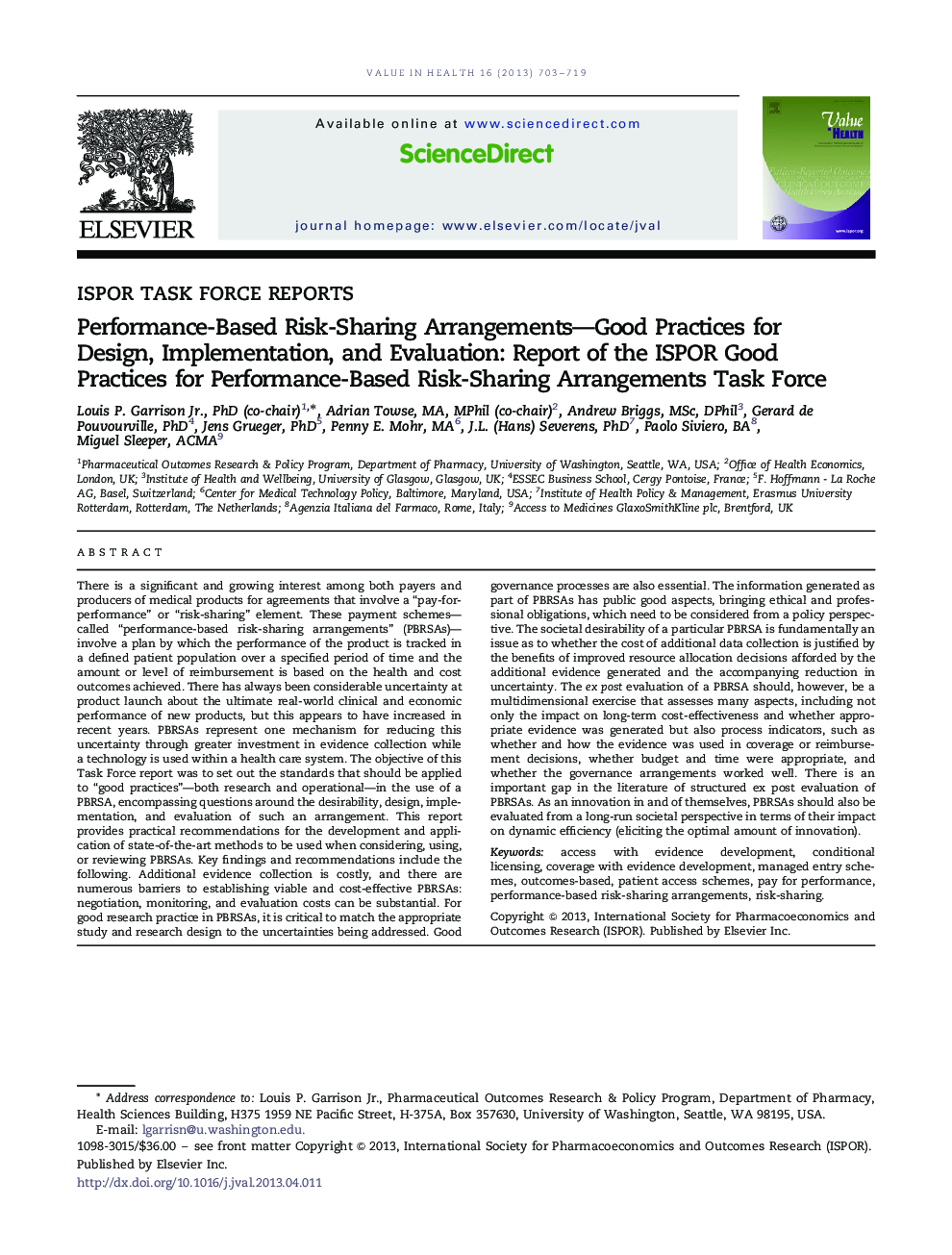| کد مقاله | کد نشریه | سال انتشار | مقاله انگلیسی | نسخه تمام متن |
|---|---|---|---|---|
| 987513 | 935146 | 2013 | 17 صفحه PDF | دانلود رایگان |
There is a significant and growing interest among both payers and producers of medical products for agreements that involve a “pay-for-performance” or “risk-sharing” element. These payment schemes—called “performance-based risk-sharing arrangements” (PBRSAs)—involve a plan by which the performance of the product is tracked in a defined patient population over a specified period of time and the amount or level of reimbursement is based on the health and cost outcomes achieved. There has always been considerable uncertainty at product launch about the ultimate real-world clinical and economic performance of new products, but this appears to have increased in recent years. PBRSAs represent one mechanism for reducing this uncertainty through greater investment in evidence collection while a technology is used within a health care system. The objective of this Task Force report was to set out the standards that should be applied to “good practices”—both research and operational—in the use of a PBRSA, encompassing questions around the desirability, design, implementation, and evaluation of such an arrangement. This report provides practical recommendations for the development and application of state-of-the-art methods to be used when considering, using, or reviewing PBRSAs. Key findings and recommendations include the following. Additional evidence collection is costly, and there are numerous barriers to establishing viable and cost-effective PBRSAs: negotiation, monitoring, and evaluation costs can be substantial. For good research practice in PBRSAs, it is critical to match the appropriate study and research design to the uncertainties being addressed. Good governance processes are also essential. The information generated as part of PBRSAs has public good aspects, bringing ethical and professional obligations, which need to be considered from a policy perspective. The societal desirability of a particular PBRSA is fundamentally an issue as to whether the cost of additional data collection is justified by the benefits of improved resource allocation decisions afforded by the additional evidence generated and the accompanying reduction in uncertainty. The ex post evaluation of a PBRSA should, however, be a multidimensional exercise that assesses many aspects, including not only the impact on long-term cost-effectiveness and whether appropriate evidence was generated but also process indicators, such as whether and how the evidence was used in coverage or reimbursement decisions, whether budget and time were appropriate, and whether the governance arrangements worked well. There is an important gap in the literature of structured ex post evaluation of PBRSAs. As an innovation in and of themselves, PBRSAs should also be evaluated from a long-run societal perspective in terms of their impact on dynamic efficiency (eliciting the optimal amount of innovation).
Journal: Value in Health - Volume 16, Issue 5, July–August 2013, Pages 703–719
